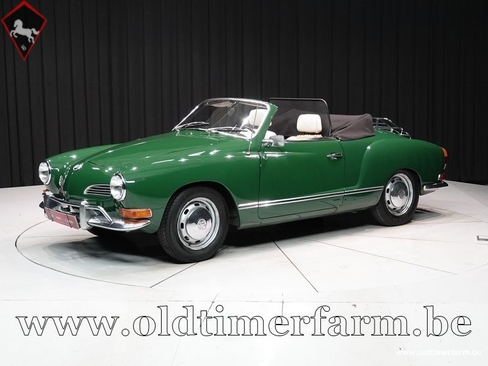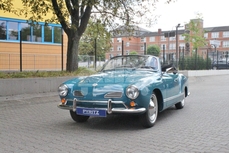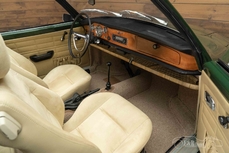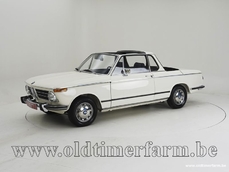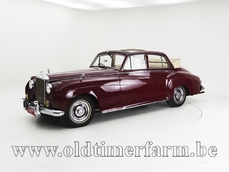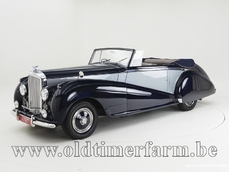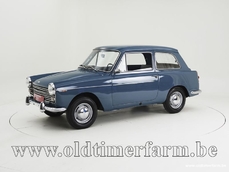Volkswagen Karmann-Ghia '70 1970
General description :
In the early 1950s, Volkswagen was producing its economy car, the Type 1 (Beetle). With an increase in post-war standards of living, executives at Volkswagen proposed adding a halo car to its model range, contracting with German coachbuilder Karmann for its manufacture. Karmann in turn contracted the Italian firm Ghia. In contrast to the Beetle's machine welded-body with bolt-on fenders, the Karmann Ghia's body panels were butt-welded, hand-shaped and smoothed with English pewter in a time-consuming process commensurate with higher-end manufacturers – and resulting in the Karmann Ghia's higher price. The design and prototype were well received by Volkswagen executives, and in August 1955 the first Type 14 was manufactured in Osnabrück, Germany. Public reaction to the Type 14 exceeded expectations, with over 10,000 sold in the first year. In September 1961, Volkswagen introduced the VW 1500 Karmann Ghia, or Type 34, based on its new Type 3 platform, featuring Volkswagen's new flat 1500cc engine design, and styling by Italian engineer Sergio Sartorelli. Due to model confusion with the Type 14 1500 introduced in 1967, the Type 34 was known variously as the "Der Große Karmann" ("the big Karmann") in Germany, "Razor Edge Ghia" in the United Kingdom, or "European Ghia" (or "Type 3 Ghia" among enthusiasts) in the United States. Today the name Type 34 is Until it was replaced by the VW-Porsche 914, it was the most expensive and luxurious passenger car VW manufactured in the 1960s — back then you could have purchased two basic Beetles for the price of one Type 34 in many markets. The comparatively high price meant it never generated high demand, and only 42,505 (plus 17 prototype convertibles were built over the car's entire production life between 1962 and 1969 (roughly 5,000 a year). Today, the Type 34 is considered a semi-rare collectible with values ranging from US$25K (nice original or restored) to $8K (driving project) to $3K (non-driving parts car). Values in Europe are the highest with an unrestored original Pearl White 1962 Coupe selling for US$34,000 in Germany in late 2010. Although the Type 34 was available in most countries, it was not offered officially in the U.S. — VW's largest and most important export market — another reason for its low sales numbers. Many still made their way to the USA (most via Canada), and the USA has the largest number of known Type 34s left in the world (400 of the total 1,500 to 2,000 or so remaining. Like its Type 14 brother, the Type 34 was styled by the Italian design studio Ghia. There are some similar styling influences, but the Type 14 Ghia looks very different from the Type 34. The chassis is also a major difference between the cars: the Type 14 shares its chassis with a Beetle, whereas the Type 34 body is mounted on the Type 3 chassis and drive train (the same as in a 1500/1600 Notchback, Variant (Squareback) and Fastback) — all distinguished by the standard 1500 pancake engine that allowed a front and rear boot. The Type 34 is mechanically the same as other Type 3s. All bodywork, interior, glass, bumpers, and most of the lenses are unique to the Type 34. The Wilhelm Karmann factory assembly line which assembled the Type 34 also produced the VW-Porsche 914 (known as Porsche 914 in the USA) — the Type 34's replacement. Specifications Bodywork Length: cm (in): 419 (165) Width: cm (in): 163 (64.2) Height: cm (in): 133 (52.4) Wheelbase: cm (in): 242 (95.3) Weight: kg (lb): 860 (1898) Mechanics. Displacement: flat-4 air-cooled 1493 cc (91 cu in), rear-mounted Valve gear: 8 Fuel system: 1 Solex carburettor Gearbox: 4-speed manual Driven wheels: rear-wheel drive Maximum power: 43 bhp at 4000 rpm Torque : 100 Nm at 2000 rpm Maximum speed: 132 km/h (82 mph)
http://www.oldtimerfarm.be/en/collection-cars-for-sale/5358/volkswagen-karmann-ghia-70.php
1970 Volkswagen Karmann-Ghia '70 is listed sold on ClassicDigest in Aalter by Oldtimerfarm Dealer for €34950.
Car Facts
Car type : Car Make : Volkswagen Model : Karmann-Ghia Model Version : '70 Engine size : 0.0 Model Year : 1970 Location : Aalter
Sold
Seller Information
Sold
People who viewed this Volkswagen Karmann-Ghia also viewed similar Volkswagen listed at ClassicDigest
Other cars listed for sale by this dealer
About Volkswagen
The Volkswagen story is indeed an intriguing tale of innovation, resilience, and post-war revival, marked by various models that have become iconic in automotive history.The People's Car (Volkswagen): Initially envisioned by Adolf Hitler in the 1930s as a "people's car" or "Volkswagen" in German, the idea was to create an affordable and practical vehicle for the German people. This concept led to the development of the Volkswagen Beetle (or the Type 1), designed by Ferdinand Porsche.
Post-War Challenges: After World War II, Volkswagen faced significant challenges. The factory was heavily damaged, and the brand's association with the Nazi regime led to a lack of interest in the car in some regions.
British Intervention - The British Army & Ivan Hirst: The British Army took control of the factory in the immediate post-war period. Major Ivan Hirst, a British Army officer, played a crucial role in reviving Volkswagen. He recognized the potential of the Beetle and advocated for its production, convincing the British military to order several thousand cars. This decision helped jumpstart the brand's revival.
Export Success and the Beetle's Global Appeal: The Beetle gained popularity not only in Germany but also globally, becoming an icon of affordable motoring. Its simple, reliable design and unique appearance made it a favorite among consumers worldwide.
Model Evolution: Over the years, Volkswagen introduced various models alongside the Beetle, each contributing to the brand's growth:
Type 2 (VW Bus or Transporter): Introduced in the 1950s, it became an iconic symbol of the hippie movement in the 1960s, loved for its spaciousness and versatility.
Golf (Rabbit in the U.S.): Launched in the mid-1970s, the Golf (or Rabbit in the U.S.) marked a shift towards front-wheel-drive, modern design, and hatchback practicality, becoming a cornerstone of the brand's success.
Passat, Jetta, and Other Models: Volkswagen expanded its lineup with models like the Passat and Jetta, catering to different market segments.
Challenges and Innovations: Despite success, Volkswagen faced challenges, including quality issues in the 1970s. However, the brand continued to innovate and develop new models and technologies.
Rise of the GTI and Global Expansion: The 1980s saw the rise of the iconic Golf GTI, a high-performance version that sparked the hot hatch trend. Volkswagen also expanded its global presence during this period.
The British intervention in reviving Volkswagen after World War II played a pivotal role in the brand's resurgence. While there might have been some tensions or competition among automotive companies in the 1950s and 1960s due to Volkswagen's post-war success, the brand's ability to produce innovative and popular models solidified its place in automotive history.
